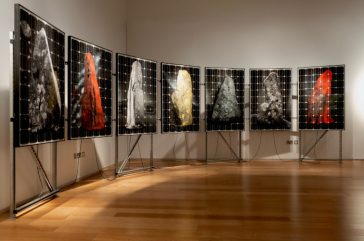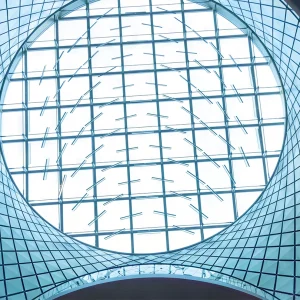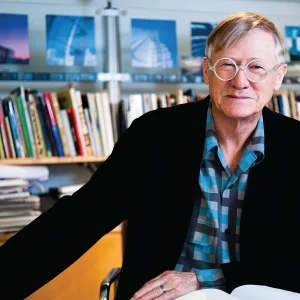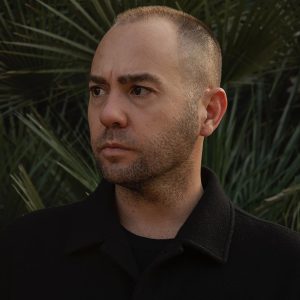
DARTMOOR IS ONE of Britain’s most diverse landscapes. Its 386 square miles combine bracken-strewn tracts of moorland, boggy wetlands, dense and ancient woodland, rolling farmland and flowing rivers. It is home to monolithic tors and Neolithic tombs, plus a multitude of species of flora and fauna. While villages and pubs are sprinkled around its foothills, the dominant mood is of ancient, uninterrupted and largely uninhabited wilderness. As such it has inspired many poets and writers, from Ted Hughes to Arthur Conan Doyle, whose Hound of the Baskervilles was set on its misty moorlands.
Perhaps less well known is the way this Devon landscape has inspired a community of contemporary artists, who are either native or have gravitated here. And it is this community that Exeter’s Royal Albert Memorial Museum (RAMM) is currently celebrating, with Dartmoor: A Radical Landscape.
 Alex Hartley’s Summoning Stones. Next to them he’s put solar thermal tubes inside boulders (below left); the show celebrates those drawn to Dartmoor
Alex Hartley’s Summoning Stones. Next to them he’s put solar thermal tubes inside boulders (below left); the show celebrates those drawn to Dartmoor
Rather than glorify its more obvious picturesque attractions, RAMM’s contemporary art curator, Lara Goodband, wanted to celebrate the aesthetic adventurers and experimenters who, over the past 55 years, have been drawn to this site. Richard Long, whose land art is liberally peppered with walking forays, photographs and texts around this windswept scenery, is the anchor for the show. But he is in very good company, with distinctive but often lesser-known artists. I had never come across Marie Yates, for example, though she is a highly regarded photographer. A contemporary of Long’s, her practice of pairing photography and text, as a way of evoking her walking practice, predates – and may well have inspired – his. Fieldworking Paper 1, 30th April, 1971 offers four blackand- white images of skeletal winter trees, some depicting a temporary ‘sculpture’ of diaphanous, shredded white material, inserted by Yates. These ghostly prints are accompanied by two spare, typed descriptions of the walks and sights she has encountered along the way.
Goodband reinforces the connection between these artists by placing Yates’ work opposite Long’s A Dartmoor Walk (1987), a large work on paper comprising a mapped outline of his routes over eight days, and a stream-of-consciousness text about his journeys.
Long, whose association with Dartmoor goes back to childhood visits to his grandparents who lived here, wouldn’t normally appear in a group show as he’s reached the status of being enough of a legend these days not to have to consider them. But when Goodband described what she was trying to do, and who else was exhibiting, he relented, telling her: ‘Well, Dartmoor is my studio. I’m going to have to be in it.’ There are six major Long works and cased works in the first of two galleries, plus a text piece on the wall of the second gallery.
 Alex Hartley’s Summoning Stones. Next to them he’s put solar thermal tubes inside boulders (below left); the show celebrates those drawn to Dartmoor
Alex Hartley’s Summoning Stones. Next to them he’s put solar thermal tubes inside boulders (below left); the show celebrates those drawn to Dartmoor
Goodband says: ‘This exhibition is a bit political. It really looks at Dartmoor as a microcosm of what we are facing today: ecological and environmental crisis, plus access to land issues.’ There are stirring photographs by Fern Leigh Albert of right-toroam and wild camping protestors at large on the moor, taken in 2023. There are also earlier black-and-white photographs of wild campers from James Ravilious, son of Eric, who seems to have embedded the Devon landscape in his heart and in his work, in the same way that his father’s graphic landscapes are so evocative of his beloved Sussex and Essex.
In putting the show together, Goodband also noticed another uniting theme emerge: ‘As I talked to lots of people and artists a theme of friendship and collaboration arose, and this is the spirit that runs through it as well; it’s all about the relationships between artists, and between the landscape and the artists and what they are trying to give back.’
Major figures in the US land and conceptual art movement, Nancy Holt and husband Robert Smithson, met Richard Long in 1969, when the two men were featured in the ICA’s groundbreaking show When Attitudes Become Form. The couple then toured the rugged edgelands of the UK, including Devon. And Holt has said that the uncanny quality that struck her about Dartmoor’s open, unmediated wilderness – as seen in her multiimage portrait that we have here, Trail Markers (1969) – may well have seeded the idea for her more famous Pine Barrens film. Twenty photographs of Dartmoor are stacked tightly together, the black edging of their frames acting like a reference grid. Each scene reveals a different segment of the landscape, but all feature an orange spot – the marker that was then used by the National Trust, which manages this land, to signify the public walking routes. These dots seem simultaneously ancient and modern: reminiscent of the cup and ring markings of Neolithic sites, as well as wittily similar to the red dots by which gallerists mark a painting as sold.
 Alex Hartley’s Summoning Stones. Next to them he’s put solar thermal tubes inside boulders (below left); the show celebrates those drawn to Dartmoor
Alex Hartley’s Summoning Stones. Next to them he’s put solar thermal tubes inside boulders (below left); the show celebrates those drawn to Dartmoor
Uncanny is a word that would also suit the new commission from Alex Hartley, which rings the far edge of this first gallery. Hartley has long been a Devon resident, but while his site-specific work has appeared all over the world, exploring our relationship to both built and natural environments, he has never shown in Devon. For his first Devon project he photographed several Dartmoor standing stones, choosing those which, he felt, emit the strongest energy. He has ink-jet printed these on photovoltaic (PV) panels, with the image either behind or blended into the PV grid, left either monochrome or tinted a dayglo orange, yellow or red. Next to these he has placed a set of solar thermal tubes inserted into granite boulders. The caption instructs you to stand at the centre of the installation: ‘I want the energy of these rocks to transfer into the viewer,’ he says, while admitting ‘it’s almost certainly unachievable.’
One of the revelations for me in this show is Susan Derges, a photographer who often works without cameras to reveal something both fleeting and timeless about nature and the captured image. Her three, large, river images here were made by inserting photographic paper into a river at night, using only the moon and her flashlight to record that moment and the water’s movement. They are mesmerising.
There is a lovely series of more corporeal interactions with the river Dart from local photographer Siân Davey, showing her friends and family playing in the water, shot on the Dartington Estate, where she lives; all seemingly tinted in a wonderful 1970s palette but that’s actually the brown, peaty water showing through (they were taken from 2014). Robert Darch is another contemporary photographer and Dartmoor local, who has contributed some striking black-and-white images of children training for the locally legendary Ten Tors outward bound challenge – tougher by far than the Duke of Edinburgh, and run by the army personnel based there. Curator Goodband says her two sons undertook it and it was ‘transformative.’ There is a feeling of profound ritual and transcendence in these moodily lit shots.
There are two series of photographs by Nicholas JR White: one a beautiful meditation on the moor in the mist, the other revealing traces that are often left by the aforementioned army, which has long used Dartmoor for training exercises. I was struck by one close-up of silvery bullets in a stream, their metallic casings glittering like small fish.
I leave feeling my own knowledge of this remarkable site has been deepened and expanded by these artists’ dedication and the many hours, days and months spent walking, looking and thinking here.





